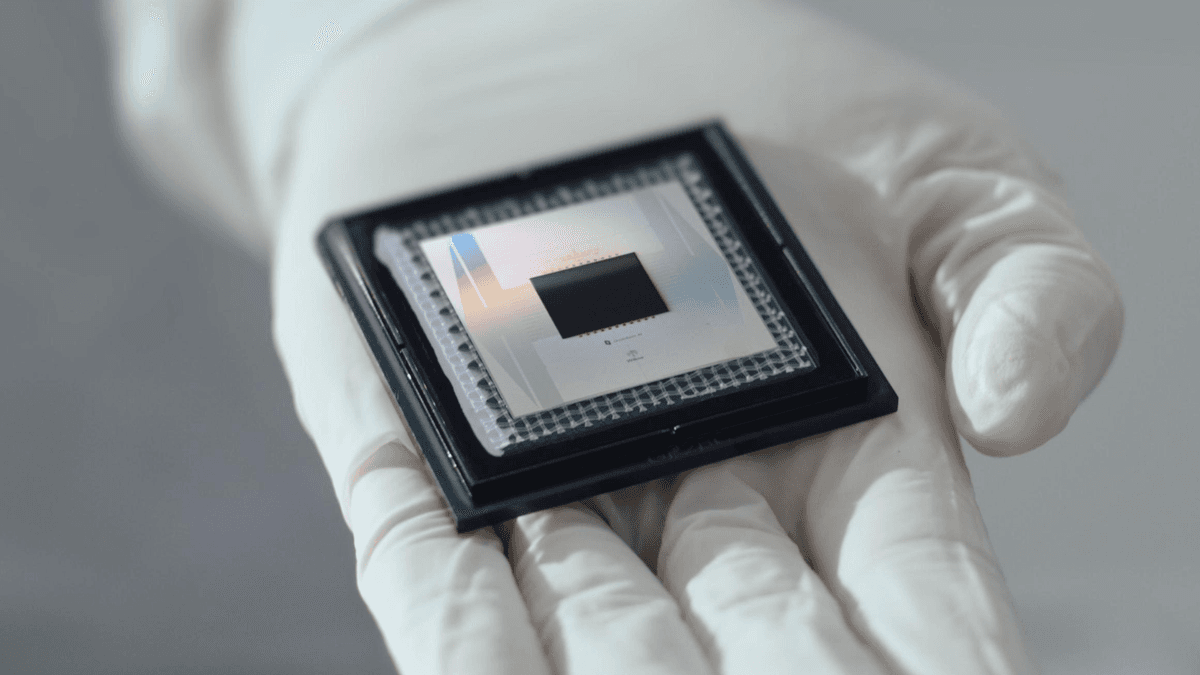Amazon has revealed a revolutionary quantum computing chip named Ocelot, which promises to reshape the future of quantum computing. This innovative chip is the first of its kind to utilize a scalable architecture that reduces the cost of error correction by an impressive 90%. Developed by the team at the AWS Center for Quantum Computing in collaboration with the California Institute of Technology, Ocelot is positioned as a major step toward building practical, fault-tolerant quantum computers.
Amazon asserts that Ocelot represents a significant breakthrough in the ongoing effort to develop quantum computers capable of solving complex problems that go beyond the reach of today’s classical computers. The design leverages a novel approach to error correction, building it from the ground up, and incorporating the advanced “cat qubit” technology.
Cat qubits—named after the famous Schrödinger’s cat thought experiment—are a key feature of Ocelot’s architecture. These qubits naturally suppress certain types of errors, which reduces the resources required for error correction. This improvement significantly enhances the chip’s reliability and performance.
For the first time, AWS researchers have successfully integrated cat qubits with additional quantum error correction components on a microchip that can be mass-produced using scalable microelectronics processes. This breakthrough allows for error correction that is both more efficient and cost-effective, an essential factor in making quantum computing more practical for real-world applications.
Oskar Painter, AWS Director of Quantum Hardware, emphasized the importance of these advancements: “With the recent developments in quantum research, it’s no longer a matter of if, but when practical, fault-tolerant quantum computers will be available. Ocelot marks a critical step forward in this journey.”
The implications of Ocelot’s design are profound. In the future, quantum chips built on this architecture could cost as little as one-fifth of the current methods, thanks to the drastically reduced need for error correction. AWS researchers believe this breakthrough could accelerate the timeline for developing practical quantum computers by up to five years.
By Impact Lab
The published research in Nature outlines the technical details behind Ocelot’s logical qubit memory. The team used a superconducting quantum circuit to create a logical qubit memory by combining encoded bosonic cat qubits with an outer repetition code. This design includes a stabilizing circuit that passively protects the qubits from certain types of errors, such as bit flips. Additionally, a repetition code using ancilla transmons (special qubits used for error correction) enables the detection and correction of phase flips in the qubits.
Overcoming Quantum Computing’s Biggest Challenge: Noise
One of the most significant obstacles in quantum computing is the extreme sensitivity of qubits to environmental “noise.” Even the smallest disturbances, such as vibrations, electromagnetic interference from devices like cell phones, or cosmic radiation, can destabilize qubits and lead to computational errors.
As Oskar Painter notes, “The biggest challenge isn’t just building more qubits, it’s making them work reliably.” Researchers have long recognized that quantum error correction is essential to ensuring the accuracy and reliability of quantum computations, particularly as the complexity of the problems being tackled increases.
Quantum error correction involves encoding quantum information across multiple qubits to shield it from environmental noise, creating “logical” qubits. These logical qubits can detect and correct errors in real-time, which is a crucial step toward building quantum computers that can perform accurate, large-scale computations. However, current error correction methods require a massive number of qubits, making them prohibitively expensive.
The Ocelot chip is poised to address this issue by offering a more scalable and cost-efficient solution. By reducing the number of qubits required for effective error correction, Ocelot paves the way for more practical and affordable quantum computers in the future.
In summary, Amazon’s Ocelot chip represents a major leap forward in quantum computing. With its innovative design and error-correction capabilities, Ocelot could accelerate the development of practical, fault-tolerant quantum computers, bringing us closer to solving complex problems once thought to be beyond the reach of classical computers.













